How Are Diamonds Made? Natural vs Lab-Created Explained
Two Paths, One Diamond Not all diamonds come from the same place — but they all start the same way. Pure carbon, crystalized under immense pressure and heat. Whether it…
The 26th of January was already a date of historical significance in Britain. From hoisting the Union Flag over Australia in 1788 to claiming Hong Kong as sovereign territory in 1841, it was a historic day of prosperity. On January 26th, 1905, when the largest gem-quality diamond in history was unearthed in southern Africa, nobody realized it would become another windfall date for Britain.
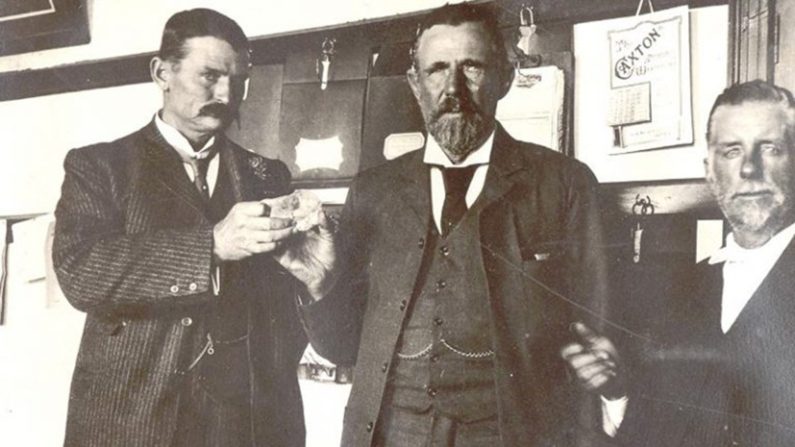
The 3,106.75 carat diamond unearthed that day measured approximately 50.00 x 50.00 x 100.00 mm. Named for the chairman of the Premier mine, the Cullinan was subsequently gifted to King Edward VII by the Transvaal government in 1907 to demonstrate loyalty to His Royal Majesty and the British royal family. In a circular honor, on its 100th anniversary in 2003, the Premier mine was renamed The Cullinan Diamond mine.
The leading diamond cutters at the time were the Asschers in Amsterdam. They received the Cullinan and spent weeks in examination. A number of inclusions within the crystal prevented it from being cut into a single stone so they carefully calculated how to split it into several pieces to best advantage. It took four days to prepare the groove in which the cleaving knife would sit.
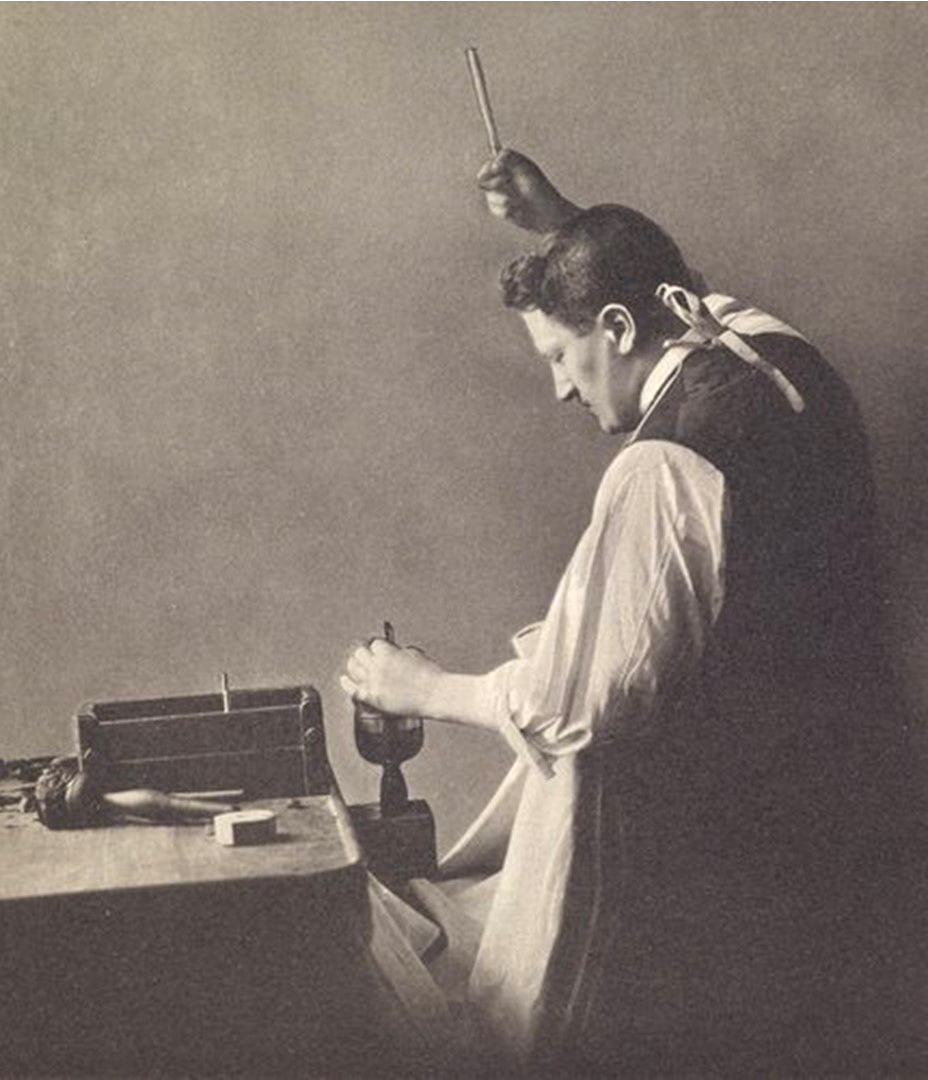
The first attempted blow split the knife, rather than the diamond, causing a need to regroup. Four days later, on February 10, 1908 Joseph Asscher successfully cleaved the Cullinan. After the initial splitting, nine large, primary pieces of rough were produced.
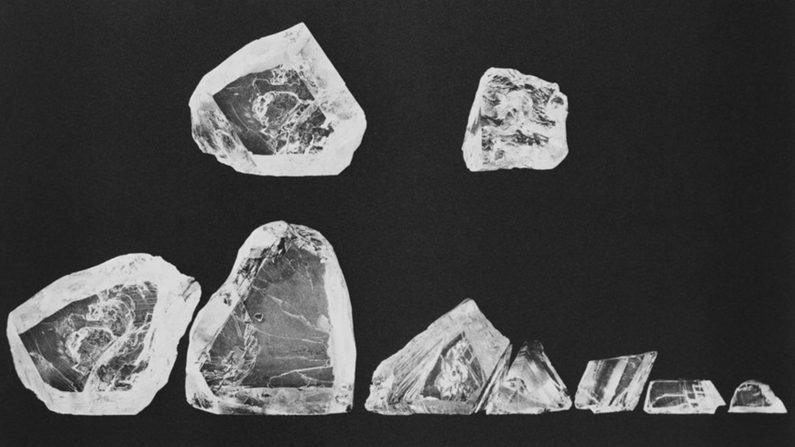
The Asschers worked long days for a period of eight months to fashion these nine primary diamonds and bring them to final polish. Each was given a number from I to IX and is still referred to by that number.
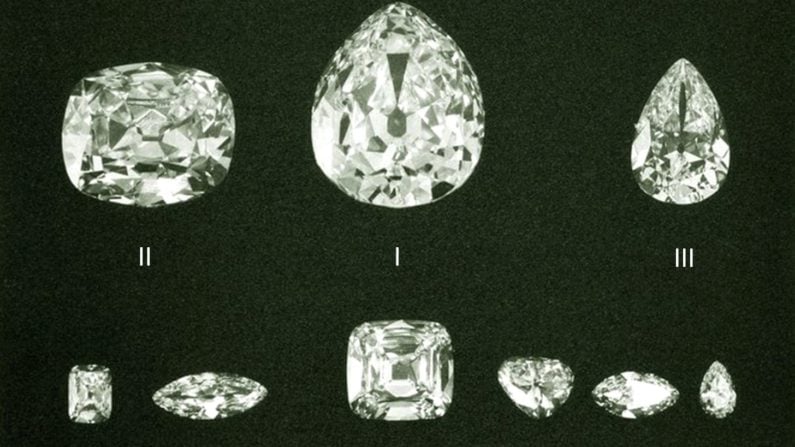
The two largest gems, Cullinan I and II, were formally presented to King Edward VII at Windsor Castle in November of 1909. The other seven remained with the Asschers as a fee for their services. In 1910 the South African government acquired those remaining primary stones from the cutters – with the exception of Cullinan VI which Edward VII had purchased and given to Queen Alexandra – and presented them to Queen Mary, reuniting the Cullinan’s major pieces.
The Cullinan IX, a 4.39 carat stepped pear shape. or pendeloque cut is mounted in a ring created by The House of Garrard, made for Queen Mary, and still worn by Queen Elizabeth II.
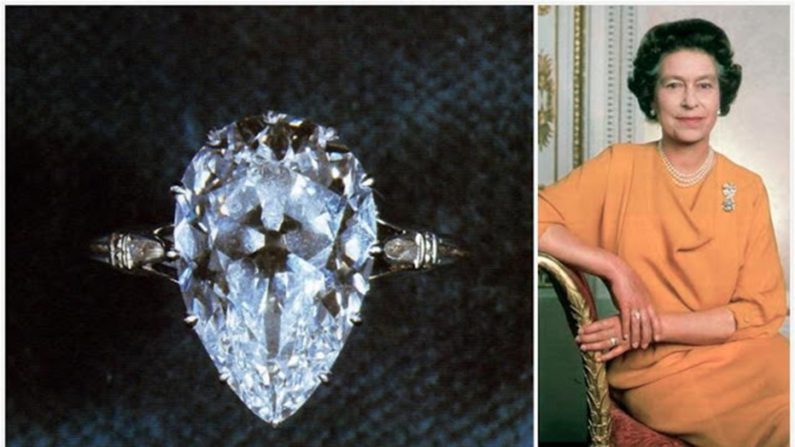
The Cullinan VIII is a 6.80 carat oblong cushion cut, seen here mounted in a brooch along with the Cullinan VII, an 8.80 carat marquise cut.
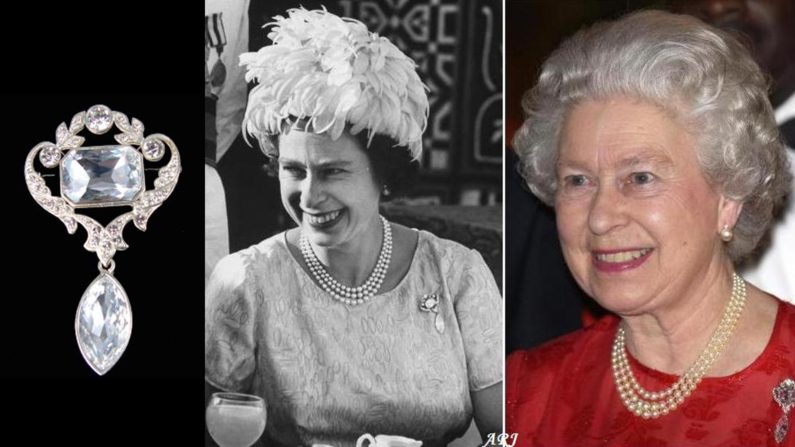
The Cullinan VI is an 11.50 carat marquise-cut. Like its 8.80 carat sibling, it’s seen here paired with the Cullinan VIII as a brooch.
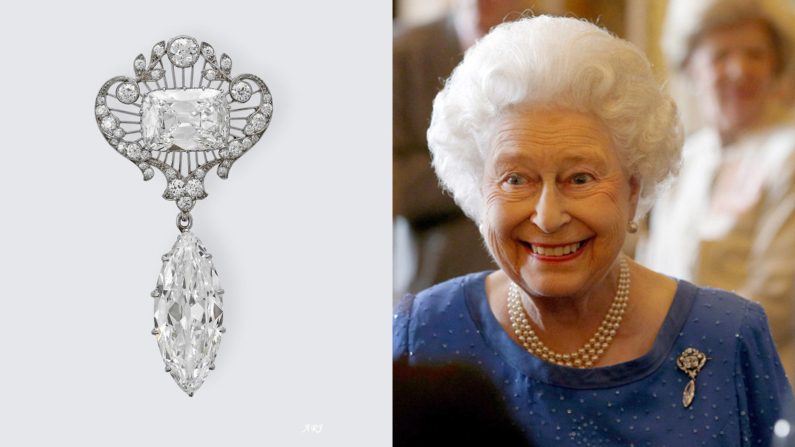
The Cullinan V is an 18.80 carat heart-shaped diamond set in a platinum brooch. Originally a devant de corsage made for Queen Mary in 1911, it is now one of Queen Elizabeth II’s favorite pieces.
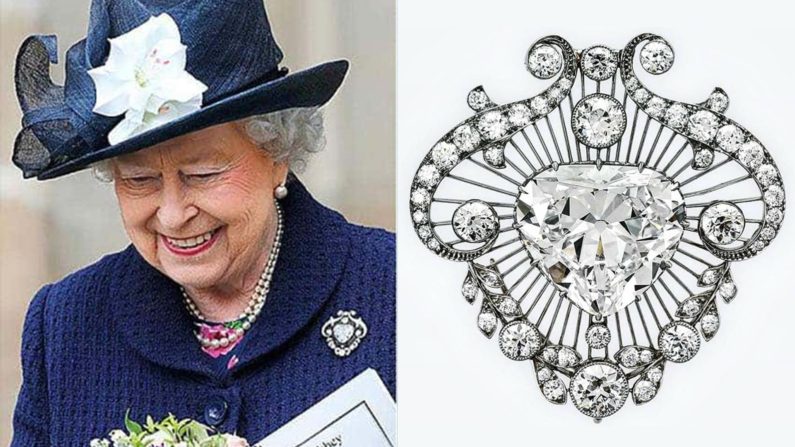
Affectionately known as “Granny’s Chips,” the Cullinan IV and III often appear together as a brooch. The Cullinan IV is a square cut diamond that weighs 63.60 carats, from which is suspended the Cullinan III, a 94.40 carat pear shape that is thought to have been Queen Mary’s personal favorite of the Cullinan collection. Some people refer to the Cullinan IV and III as “Lesser Stars of Africa,” respectfully linking their size and quality with that of the Cullinan I and II.
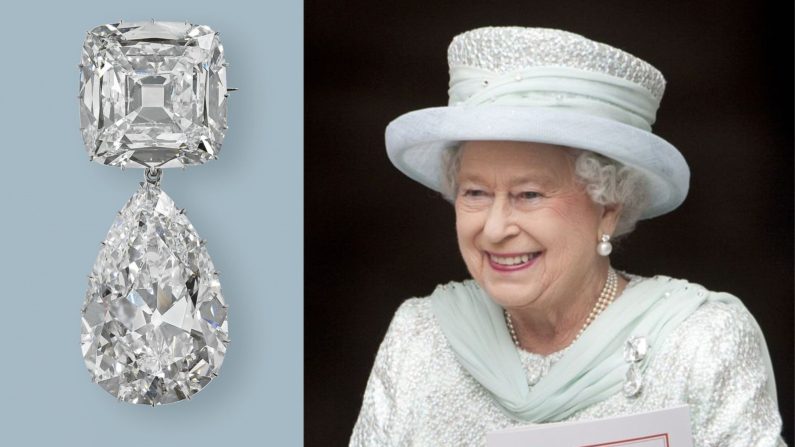
The Cullinan II, or the “Second Star of Africa,” is a 317.40 carat cushion-cut with 66 facets set into the front of the Imperial State Crown. This is one of the Crown Jewels of the United Kingdom, symbolizing the sovereignty of the monarch. The crown is adorned with 2,901 precious stones, including the Cullinan II, St Edward’s Sapphire, the Stuart Sapphire, and the Black Prince’s Ruby – which we now know is a red spinel.
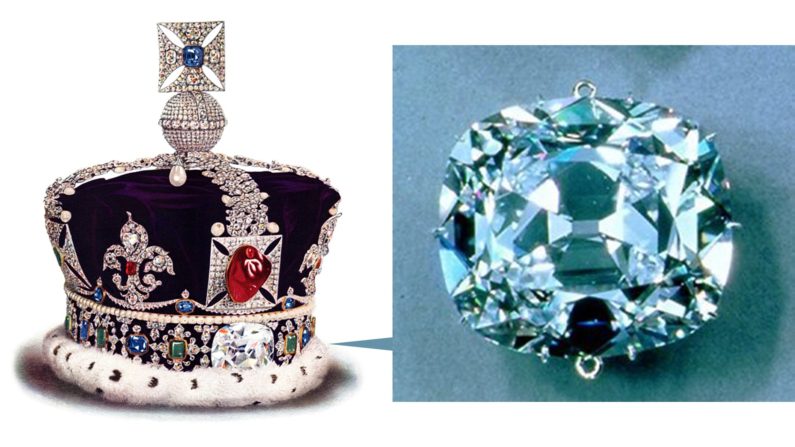
Known as the “Great Star of Africa,” The Cullinan I is a 530.20 carat pendeloque cut brilliant with 74 facets. Measuring 5.89 cm x 4.54 cm x 2.77 cm (centimeters, not millimeters), it is the largest polished colorless diamond in the world. In 1911 The House of Garrard, Crown Jeweler, mounted it into the Sovereign’s Sceptre, originally created for the coronation of Charles II in 1661. The structure which holds the diamond is hinged, so the stone can be removed and worn separately. After its original fashioning in 1908, the stone was valued at $2.5 million. Incorporated into the Sovereign’s Sceptre and Cross, as part of the Crown Jewels of the United Kingdom, it’s beyond price.
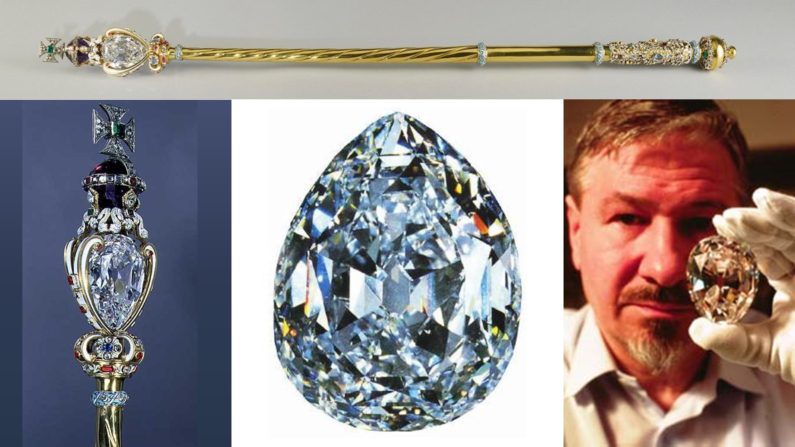
The Cullinan I and Cullinan II were examined by gemologists at the Tower of London in the 1980s and both were graded as colorless Type IIa diamonds.
From Queen Mary to The Queen Mother to Queen Elizabeth II today, diamonds fashioned from the Cullinan have adorned members of the Royal Family for over 100 years. Her Royal Majesty ascended to the throne at age 25 and recalls seeing the State Crown and Sovereign’s Sceptre passed to her father, before her.
“I’ve seen one coronation, and been the recipient in the other, which is pretty remarkable.” – Queen Elizabeth II
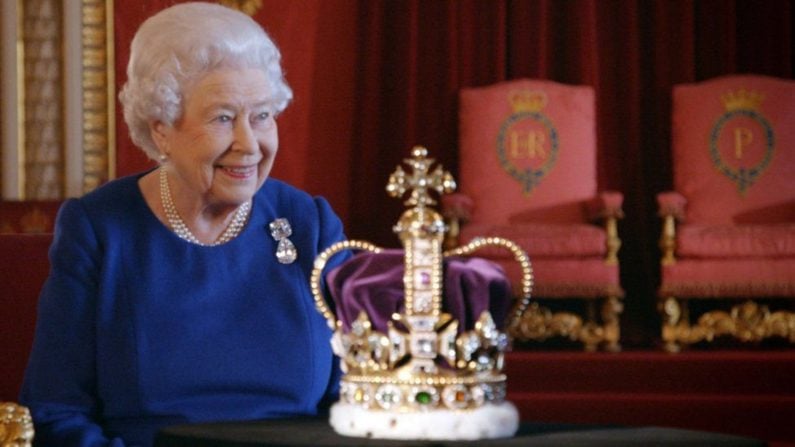
In 1973 the people of Burma gifted Queen Elizabeth II with 96 rubies. These were incorporated into a Ruby and Diamond tiara Her Royal Majesty wears with frequency. The number 96 has meaning – as the Burmese people believe rubies have healing properties and will protect a wearer from 96 diseases that can afflict the human body. They wanted to ensure that the Queen remained hale and hearty.
So far, so good.
Long live the Queen. And long live the King of diamonds.
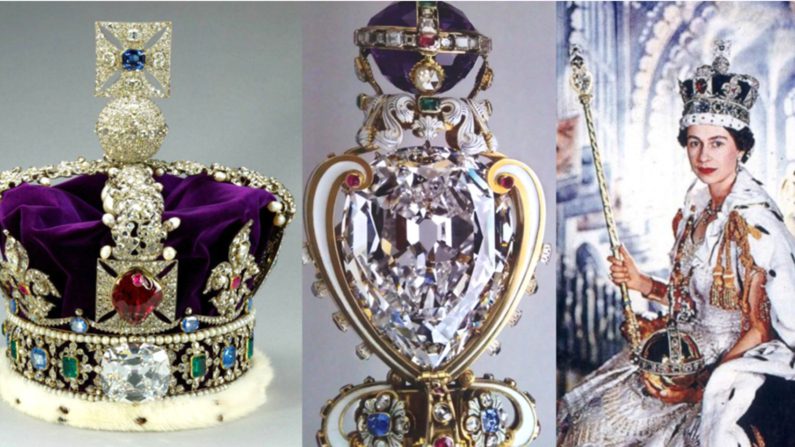
Written by John Pollard
Comments?
Would you wear a 530.20 carat diamond in public? Do you know which diamond shape, used for one of the Cullinan stones, Louis de Berquem is credited for creating? Are you caught up on your episodes of The Crown? Do you think a colorless diamond weighing more than 3106.75 carats will ever be discovered?
More Reading
Learn how to define brightness, leakage, contrast, and scintillation on our page Diamond Performance Explained.
Take your diamonds on a brightness, fire, and sparkle test drive: Make Comparisons Like an Expert.
Get fast answers to any question: Ask our community of unbiased independent helpers.
Ready to find your diamond?